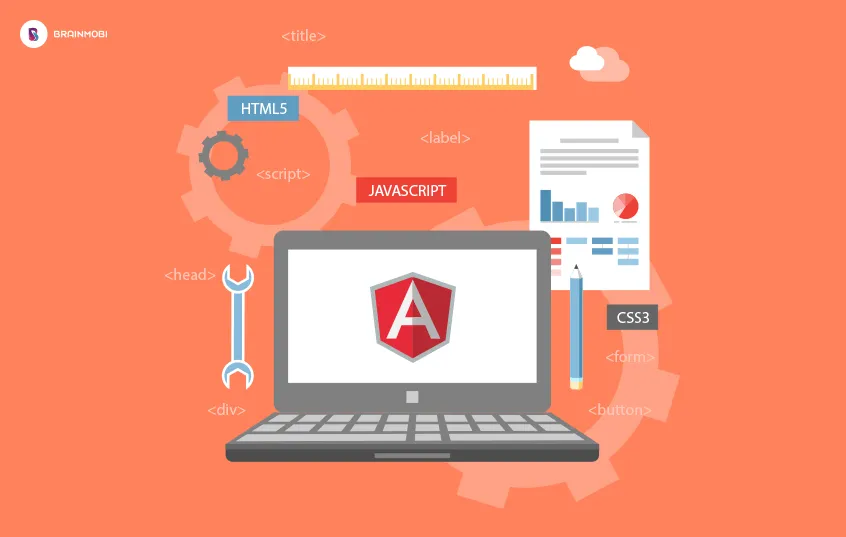
Developing Dynamic Web Applications Using Angular 
Discover the fundamentals of Developing Dynamic Web Applications Using Angular ▼
ADVERTISEMENT
Course Feature
![]() Cost:
Cost:
Free Trial
![]() Provider:
Provider:
QuickStart
![]() Certificate:
Certificate:
No Information
![]() Language:
Language:
English
![]() Start Date:
Start Date:
Self Paced
Course Overview
❗The content presented here is sourced directly from QuickStart platform. For comprehensive course details, including enrollment information, simply click on the 'Go to class' link on our website.
Updated in [May 19th, 2023]
This course, Developing Dynamic Web Applications Using Angular, is designed to help developers create sophisticated, enterprise-grade web applications that render HTML components based on the client. It covers the fundamentals of Angular versions 2 and greater, and provides a comprehensive overview of the framework.
The course begins with an introduction to the Angular framework, including its history, features, and benefits. It then moves on to discuss the components of an Angular application, such as modules, components, services, and directives. The course also covers topics such as routing, forms, and data binding.
In addition, the course covers advanced topics such as authentication, authorization, and security. It also covers the use of Angular with other frameworks, such as React and Vue.js. Finally, the course covers the use of Angular with server-side technologies, such as Node.js and Express.
By the end of the course, participants will have a comprehensive understanding of the Angular framework and be able to create dynamic web applications using Angular. They will also be able to use Angular with other frameworks and server-side technologies. Participants will also gain an understanding of the components of an Angular application, such as modules, components, services, and directives.
[Applications]
This course provides developers with the knowledge and skills to apply Angular to create dynamic web applications. After completing this course, developers should be able to create sophisticated web applications that render HTML components based on the client, use Angular components to create a user interface, and use Angular services to manage data. Additionally, developers should be able to use Angular to create a single page application, use routing to navigate between pages, and use forms to capture user input.
[Career Paths]
1. Front-End Web Developer: Front-end web developers are responsible for creating the visual elements of a website or web application. They use HTML, CSS, and JavaScript to create the user interface and user experience. With the increasing popularity of Angular, front-end web developers are expected to have a strong understanding of the framework and its components. As the demand for web applications continues to grow, the need for front-end web developers with Angular experience will also increase.
2. Full-Stack Web Developer: Full-stack web developers are responsible for both the front-end and back-end development of a website or web application. They must have a strong understanding of both the client-side and server-side technologies. With the increasing popularity of Angular, full-stack web developers are expected to have a strong understanding of the framework and its components. As the demand for web applications continues to grow, the need for full-stack web developers with Angular experience will also increase.
3. Mobile App Developer: Mobile app developers are responsible for creating mobile applications for smartphones and tablets. With the increasing popularity of Angular, mobile app developers are expected to have a strong understanding of the framework and its components. As the demand for mobile applications continues to grow, the need for mobile app developers with Angular experience will also increase.
4. Software Engineer: Software engineers are responsible for designing, developing, testing, and maintaining software applications. With the increasing popularity of Angular, software engineers are expected to have a strong understanding of the framework and its components. As the demand for software applications continues to grow, the need for software engineers with Angular experience will also increase.
[Education Paths]
1. Bachelor of Science in Computer Science: This degree path provides students with a comprehensive understanding of computer science fundamentals, such as programming, software engineering, and computer architecture. It also covers topics such as artificial intelligence, computer networks, and database systems. With the increasing demand for web applications, this degree path is becoming increasingly popular and provides students with the skills necessary to develop dynamic web applications using Angular.
2. Bachelor of Science in Web Development: This degree path focuses on the development of web applications and websites. It covers topics such as HTML, CSS, JavaScript, and Angular. Students learn how to create dynamic web applications using Angular and other web development technologies. This degree path is becoming increasingly popular as the demand for web applications continues to grow.
3. Master of Science in Computer Science: This degree path provides students with an advanced understanding of computer science fundamentals, such as programming, software engineering, and computer architecture. It also covers topics such as artificial intelligence, computer networks, and database systems. With the increasing demand for web applications, this degree path is becoming increasingly popular and provides students with the skills necessary to develop dynamic web applications using Angular.
4. Master of Science in Web Development: This degree path focuses on the development of web applications and websites. It covers topics such as HTML, CSS, JavaScript, and Angular. Students learn how to create dynamic web applications using Angular and other web development technologies. This degree path is becoming increasingly popular as the demand for web applications continues to grow.
Course Provider

Provider QuickStart's Stats at AZClass
Discussion and Reviews
0.0 (Based on 0 reviews)
Explore Similar Online Courses

Architecting with Google Compute Engine

Free Anatomy Tutorial - Medical Anatomy

Python for Informatics: Exploring Information

Social Network Analysis

Introduction to Systematic Review and Meta-Analysis

The Analytics Edge

DCO042 - Python For Informatics

Causal Diagrams: Draw Your Assumptions Before Your Conclusions

Whole genome sequencing of bacterial genomes - tools and applications

NgRx (with NgRx Data) - The Complete Guide (Angular 15)

Angular Essential Training Online Class

Angular Fast Crash Course
 Related Categories
Related Categories
 Popular Providers
Popular Providers
Quiz
 Submitted Sucessfully
Submitted Sucessfully
1. What is the main purpose of Angular?
2. What versions of Angular are covered in this course?
3. What type of components does Angular create?


Start your review of Developing Dynamic Web Applications Using Angular